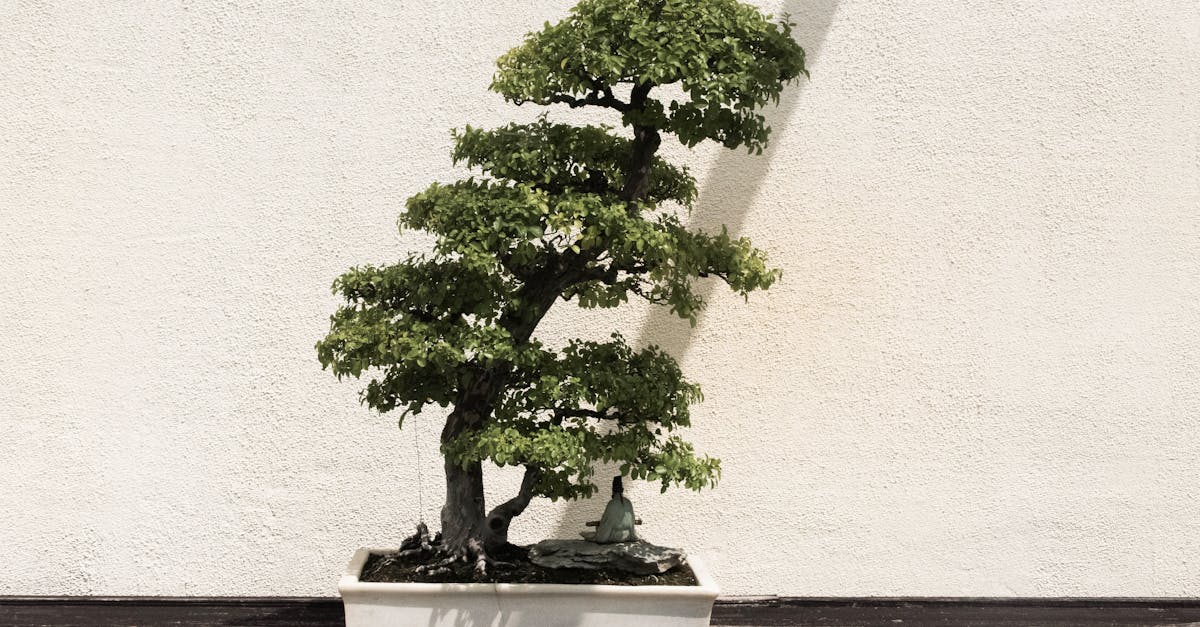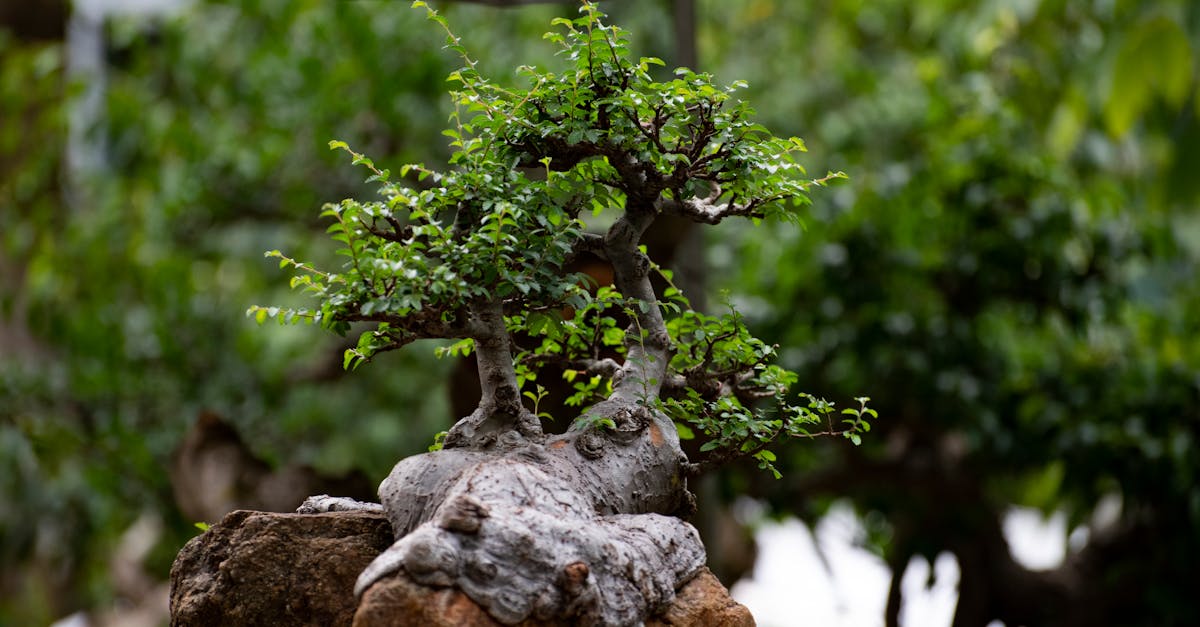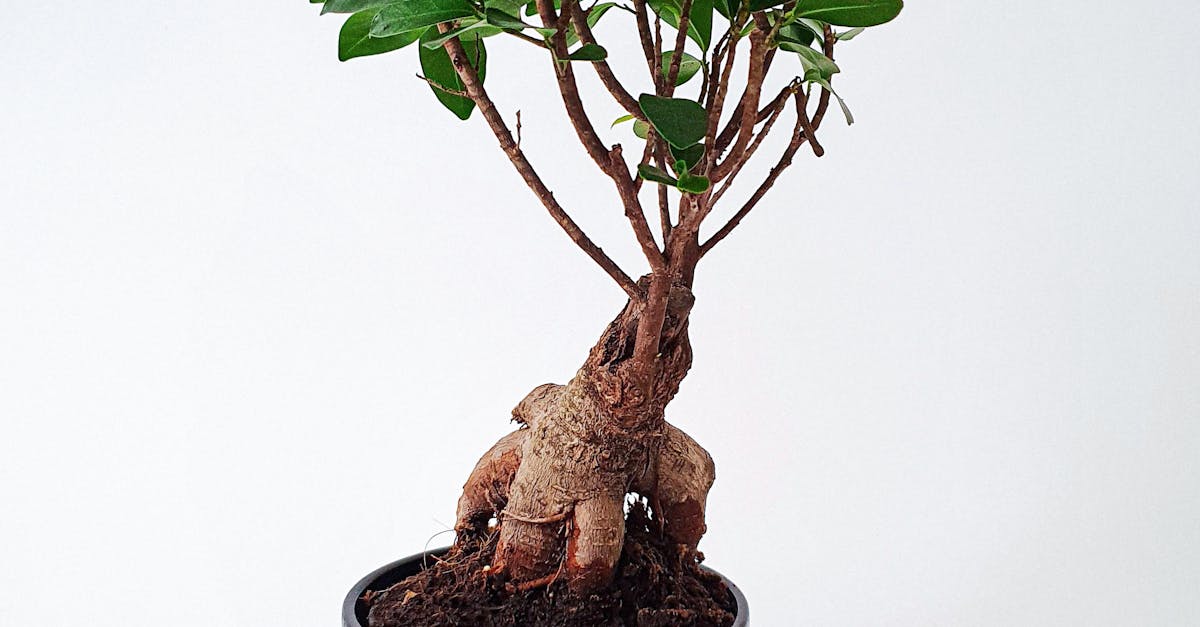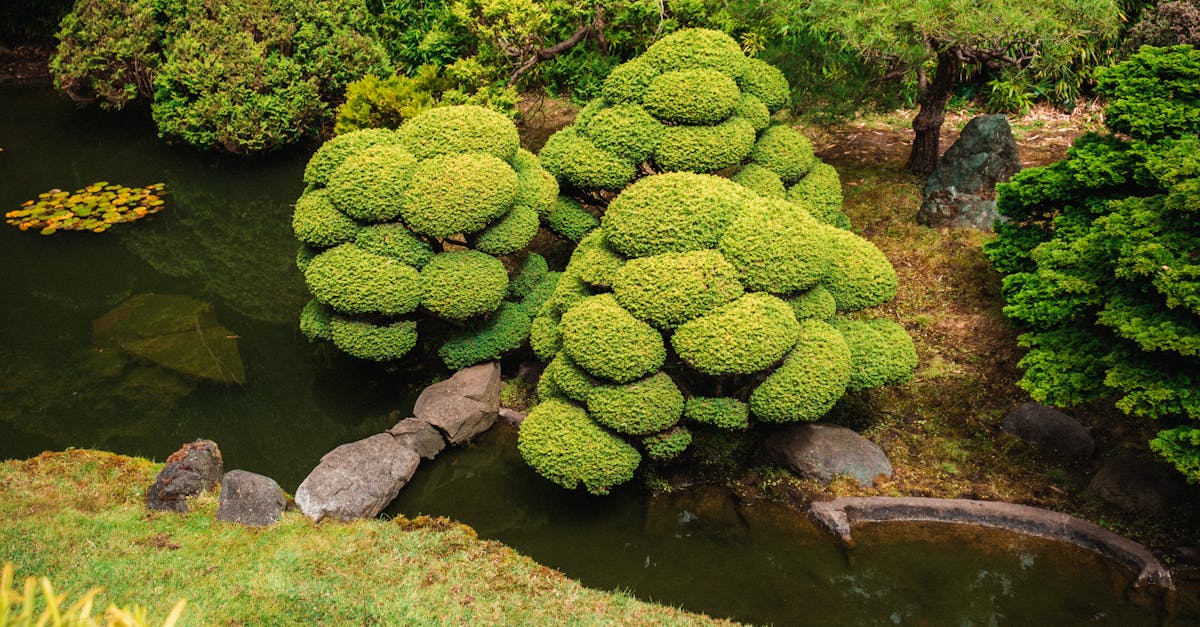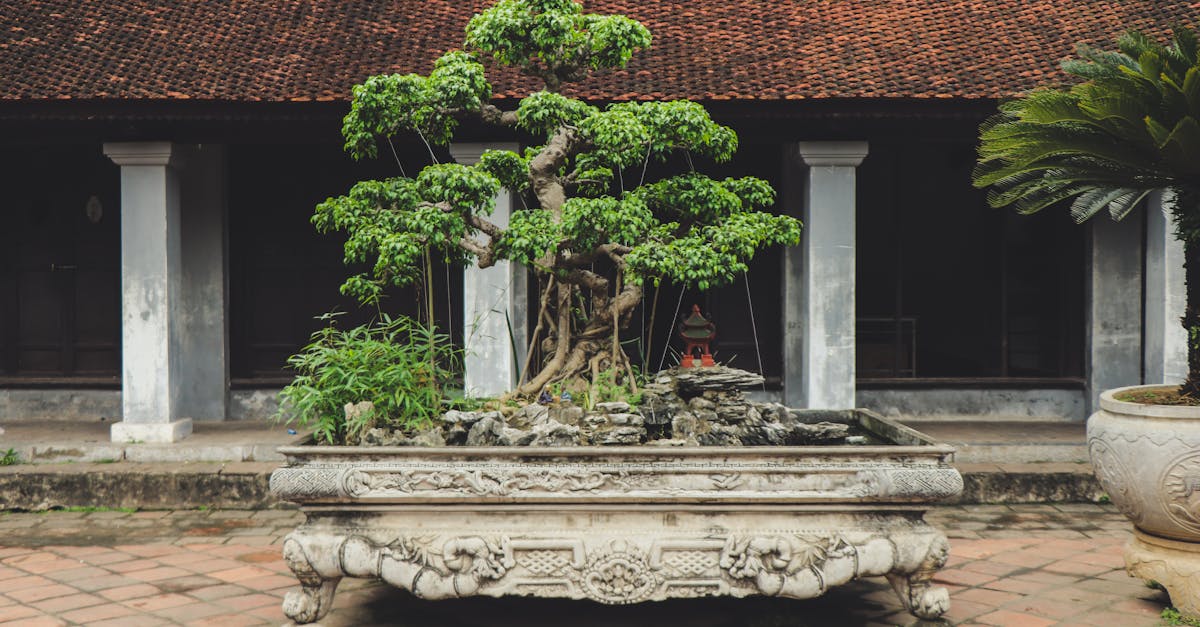Recognizing and Addressing Common Signs of Distress in Your Indoor Bonsai

Signs Your Indoor Bonsai Is in Distress: A Comprehensive Guide
The delicate art of bonsai cultivation requires careful attention to the needs of these miniature trees. Unfortunately, indoor bonsai are prone to various stressors that can manifest in subtle or overt signs. Understanding these signs is crucial for preserving the health and beauty of your bonsai.
This comprehensive guide will delve into the common signs of distress in indoor bonsai, empowering you to identify and address potential issues promptly. From wilting and yellowing leaves to leaf scorching, browning, and even dieback, we will explore the causes and remedies for each condition. By paying close attention to your bonsai’s well-being and taking appropriate action, you can ensure its longevity and continued vitality.
1. Wilting and Drooping
Wilting and Drooping: A Sign of Underwatered or Poorly Watered Bonsai
Wilting and drooping leaves are among the most common signs of distress in indoor bonsai. This condition is often caused by underwatering or improper watering practices, which can lead to dehydration and nutrient deficiency. It is important to address wilting promptly to prevent further decline and potential loss of your bonsai.
To determine the cause of wilting, examine the soil moisture, sunlight exposure, and root health of your bonsai. If the soil is dry to the touch, it is likely that your bonsai needs more water. However, if the soil is moist or wet, the wilting may be caused by poor drainage or root problems. In this case, it is best to repot your bonsai into a well-draining soil mix and check the roots for any signs of rot or damage.
Once you have determined the cause of the wilting, adjust your watering frequency and technique accordingly. If the soil is too dry, water your bonsai thoroughly and allow the excess water to drain away. If the soil is too moist, reduce the frequency of watering and ensure that your bonsai is planted in a pot with drainage holes. Additionally, provide your bonsai with adequate sunlight, as this is essential for photosynthesis and overall plant health.
Causes of Wilting
Causes of Wilting: Identifying the Underlying Factors
Wilting in indoor bonsai can be caused by a variety of factors, including:
-
Underwatering: This is the most common cause of wilting in bonsai. When the soil is too dry, the roots are unable to absorb enough water to meet the needs of the plant. This can lead to dehydration and wilting of the leaves.
-
Poor drainage: If the soil in your bonsai pot does not drain well, excess water can accumulate around the roots. This can lead to waterlogged roots, which can also cause wilting.
-
Root rot: Root rot is a fungal infection that can damage the roots of your bonsai. This can prevent the roots from absorbing water and nutrients, leading to wilting.
-
Excessive sunlight: Too much direct sunlight can scorch the leaves of your bonsai, causing them to wilt and drop.
-
Nutrient deficiency: A lack of nutrients, such as nitrogen or iron, can also cause wilting in bonsai. This is because nutrients are essential for plant growth and development.
To determine the cause of wilting in your bonsai, it is important to examine the soil moisture, sunlight exposure, and root health. If the soil is dry to the touch, water your bonsai thoroughly and allow the excess water to drain away. If the soil is moist or wet, check for signs of poor drainage or root rot. If the roots are damaged or rotting, repot your bonsai into a well-draining soil mix and treat the roots with a fungicide.
Remedies for Wilting
Remedies for Wilting: Restoring the Health of Your Bonsai
Once you have determined the cause of wilting in your bonsai, you can take steps to address the issue and restore the health of your plant.
-
Underwatering: If your bonsai is wilting due to underwatering, the solution is simple: water it thoroughly. Allow the excess water to drain away, and then check the soil moisture regularly to ensure that it does not become too dry again.
-
Poor drainage: If the soil in your bonsai pot does not drain well, you will need to repot your bonsai into a well-draining soil mix. This will help to prevent excess water from accumulating around the roots and causing wilting.
-
Root rot: If your bonsai is wilting due to root rot, you will need to treat the roots with a fungicide. You may also need to repot your bonsai into a new pot with fresh soil.
-
Excessive sunlight: If your bonsai is wilting due to excessive sunlight, move it to a location with less direct sunlight. You can also provide your bonsai with shade by placing it under a tree or using a shade cloth.
-
Nutrient deficiency: If your bonsai is wilting due to a nutrient deficiency, you will need to fertilize it with a balanced fertilizer. Follow the instructions on the fertilizer package carefully to avoid over-fertilizing your bonsai.
By following these remedies, you can help your wilting bonsai recover and regain its health and vitality.
2. Yellowing Leaves
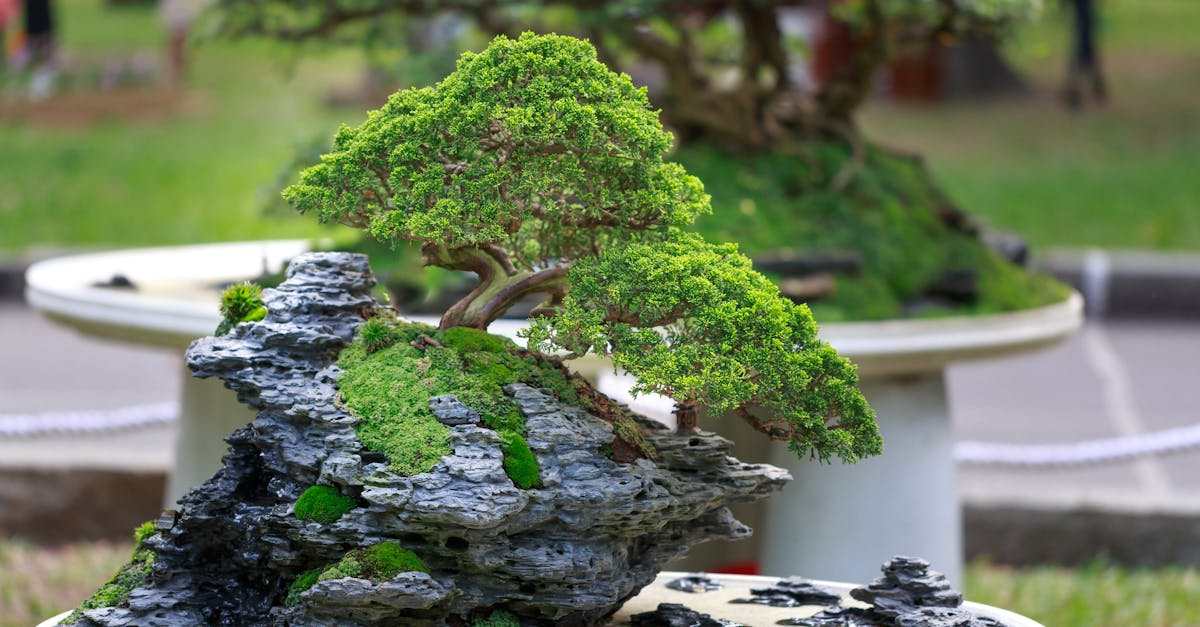
Yellowing Leaves: Diagnosing and Treating Common Causes
Yellowing leaves are a common problem in indoor bonsai, and can be caused by a variety of factors, including nutrient deficiencies, overwatering, or insufficient sunlight. In order to effectively treat yellowing leaves, it is important to first diagnose the underlying cause.
One of the most common causes of yellowing leaves in bonsai is nutrient deficiency. Nitrogen and iron are two essential nutrients that are often deficient in bonsai trees. Nitrogen deficiency can cause the leaves to turn a pale green or yellow color, while iron deficiency can cause the leaves to turn yellow with green veins. If you suspect that your bonsai is suffering from a nutrient deficiency, you can fertilize it with a balanced fertilizer. Be sure to follow the instructions on the fertilizer package carefully to avoid over-fertilizing your bonsai.
Overwatering can also cause yellowing leaves in bonsai. When the soil is too wet, the roots are unable to absorb oxygen, which can lead to nutrient deficiencies and yellowing leaves. To avoid overwatering, allow the soil to dry out slightly between waterings. You can also check the soil moisture by inserting your finger into the soil. If the soil is dry up to the first knuckle, it is time to water your bonsai.
Insufficient sunlight can also cause yellowing leaves in bonsai. Bonsai trees need bright, indirect light to thrive. If your bonsai is not getting enough sunlight, the leaves may turn yellow and drop. To provide your bonsai with more sunlight, move it to a brighter location or place it under a grow light.
Nutrient Deficiencies
Nutrient Deficiencies: Identifying and Correcting Nutrient Imbalances
Nutrient deficiencies are a common cause of yellowing leaves in bonsai trees. Nitrogen and iron are two essential nutrients that are often deficient in bonsai trees. Nitrogen deficiency can cause the leaves to turn a pale green or yellow color, while iron deficiency can cause the leaves to turn yellow with green veins.
To correct a nitrogen deficiency, fertilize your bonsai with a fertilizer that is high in nitrogen. Nitrogen fertilizers are typically labeled with a high first number, such as 10-5-5 or 15-0-0. To correct an iron deficiency, fertilize your bonsai with a fertilizer that is high in iron. Iron fertilizers are typically labeled with a high second number, such as 5-10-5 or 0-15-0.
When fertilizing your bonsai, it is important to follow the instructions on the fertilizer package carefully. Over-fertilizing can damage your bonsai, so it is always better to err on the side of caution. If you are unsure about how much fertilizer to use, start with a weaker solution and gradually increase the strength until you see results.
Overwatering
Overwatering: Avoiding Root Suffocation and Leaf Loss
Overwatering is another common cause of yellowing leaves in bonsai trees. When the soil is too wet, the roots are unable to absorb oxygen, which can lead to nutrient deficiencies and yellowing leaves. In severe cases, overwatering can also lead to root rot, which can kill your bonsai tree.
To avoid overwatering, allow the soil to dry out slightly between waterings. You can also check the soil moisture by inserting your finger into the soil. If the soil is dry up to the first knuckle, it is time to water your bonsai. Bonsai trees also need good drainage to prevent the soil from becoming waterlogged. Make sure that your bonsai pot has drainage holes, and that the soil mix is well-draining.
If you think that your bonsai may be overwatered, reduce the frequency of watering and allow the soil to dry out more between waterings. You can also repot your bonsai into a new pot with fresh soil mix to help improve drainage.
3. Leaf Scorching and Browning
Leaf Scorching and Browning: Identifying and Addressing the Causes
Leaf scorching and browning are common problems in bonsai trees, and can be caused by a variety of factors, including sunburn, fertilizer burn, or pest infestations. It is important to identify the cause of leaf scorching and browning in order to take appropriate action.
One of the most common causes of leaf scorching and browning is sunburn. Bonsai trees need bright, indirect light to thrive, but too much direct sunlight can scorch the leaves. To avoid sunburn, move your bonsai to a location with less direct sunlight. You can also provide your bonsai with shade by placing it under a tree or using a shade cloth.
Another common cause of leaf scorching and browning is fertilizer burn. Fertilizers are essential for providing bonsai trees with the nutrients they need to grow and thrive, but too much fertilizer can burn the leaves. To avoid fertilizer burn, follow the instructions on the fertilizer package carefully and never over-fertilize your bonsai.
Finally, leaf scorching and browning can also be caused by pest infestations. Pests such as aphids, spider mites, and scale can feed on the leaves of bonsai trees, causing them to scorch and brown. To control pests, inspect your bonsai regularly and treat any infestations promptly with an appropriate pesticide.
Sunburn
Sunburn: Protecting Your Bonsai from Excessive Sunlight
Sunburn is a common problem in bonsai trees, especially during the summer months. Prolonged exposure to direct sunlight can cause the leaf tips to burn and brown. In severe cases, sunburn can also damage the leaves, causing them to drop off. To avoid sunburn, it is important to provide your bonsai with shade during the hottest part of the day.
One way to provide shade for your bonsai is to move it to a location that receives less direct sunlight. You can also create shade by placing your bonsai under a tree or using a shade cloth. If you are using a shade cloth, be sure to choose one that is made of a breathable material, such as cheesecloth or burlap. This will allow air to circulate around your bonsai and prevent it from overheating.
In addition to providing shade, it is also important to water your bonsai regularly during the summer months. This will help to keep the leaves hydrated and less susceptible to sunburn. However, be careful not to overwater your bonsai, as this can lead to root rot.
Fertilizer Burn
Fertilizer Burn: Avoiding Over-Fertilization in Bonsai Trees
Fertilizer burn is a common problem in bonsai trees, especially for beginners. Excessive fertilization can cause the leaves to turn brown and scorched. In severe cases, fertilizer burn can also damage the roots and kill the tree. To avoid fertilizer burn, it is important to follow the instructions on the fertilizer package carefully and never over-fertilize your bonsai.
One of the most important things to remember when fertilizing bonsai trees is that less is more. It is better to under-fertilize your bonsai than to over-fertilize it. If you are unsure about how much fertilizer to use, start with a weaker solution and gradually increase the strength until you see results.
If you think that your bonsai may have fertilizer burn, the first step is to flush the soil with water. This will help to remove any excess fertilizer from the soil and prevent further damage to the roots. Once you have flushed the soil, reduce the frequency of fertilization and use a weaker solution. You may also want to repot your bonsai into a new pot with fresh soil mix to help remove any remaining fertilizer.
4. Pest Infestations
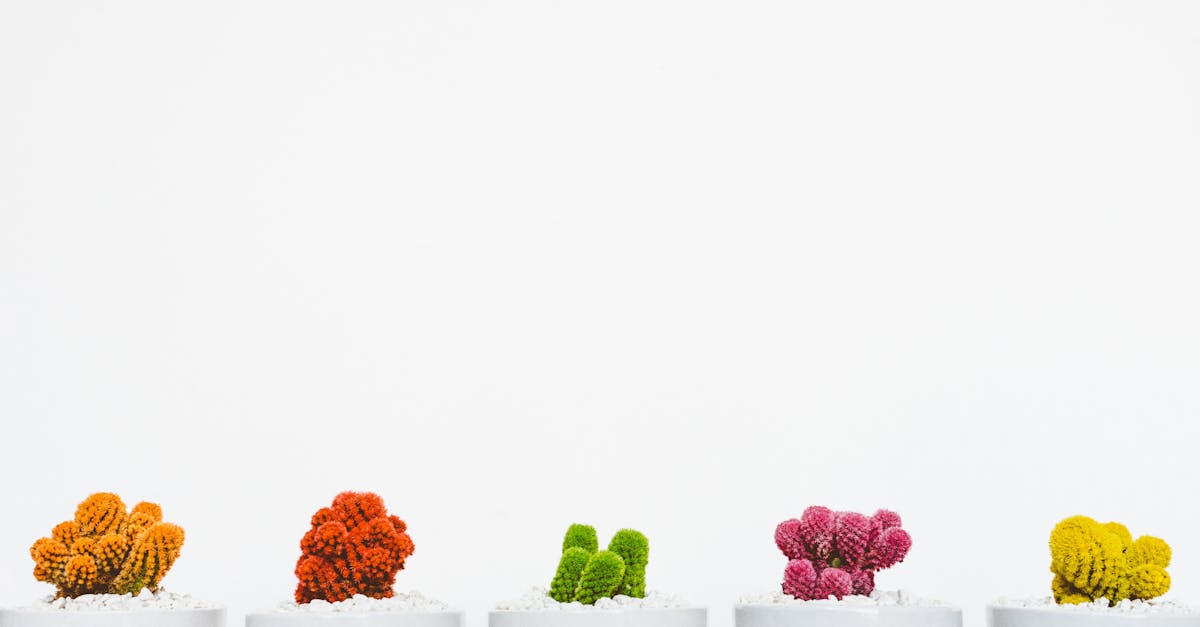
Pest Infestations: Identifying and Controlling Common Pests in Bonsai Trees
Pest infestations are a common problem in bonsai trees, and can cause a variety of problems, including leaf discoloration, damage, and even plant death. Aphids, spider mites, and mealybugs are some of the most common pests that affect bonsai trees.
Aphids are small, soft-bodied insects that feed on the sap of plants. They can cause leaves to turn yellow and drop, and can also stunt the growth of the tree. Spider mites are tiny, spider-like creatures that feed on the leaves of plants. They can cause leaves to turn brown and drop, and can also cause the tree to become stunted. Mealybugs are small, white insects that feed on the sap of plants. They can cause leaves to turn yellow and drop, and can also cause the tree to become stunted.
It is important to detect and treat pest infestations early on to prevent serious damage to your bonsai tree. Regularly inspect your tree for signs of pests, such as yellowing leaves, brown spots, or webbing. If you find any pests, you can treat them with a variety of methods, including insecticidal soap, neem oil, or horticultural oil.
Common Pests
Common Pests: Identifying the Culprits in Bonsai Infestations
Familiarizing yourself with the common pests that affect indoor bonsai is the first step to keeping your trees healthy and thriving. These tiny creatures can cause a variety of problems, from stunted growth to yellowing leaves and even death. By knowing what to look for, you can take early action to control and eliminate infestations.
Aphids: These small, soft-bodied insects are often green, but can also be black, brown, or red. They feed on the sap of plants, causing leaves to turn yellow and drop. Aphids can also spread diseases from plant to plant.
Mealybugs: Mealybugs are small, white insects that look like cottony masses on the stems and leaves of plants. They also feed on the sap of plants, causing leaves to turn yellow and drop. Mealybugs can also produce honeydew, which attracts ants.
Spider mites: Spider mites are tiny, spider-like creatures that are often red, brown, or black. They feed on the leaves of plants, causing them to turn yellow and drop. Spider mites can also cause the leaves to become dry and brittle.
Treatment Options
Treatment Options: Combating Pests in Bonsai Cultivation
Once you have identified the type of pest affecting your bonsai, you can begin to explore treatment options. A variety of methods are available, depending on the severity of the infestation and the type of pest. Here are a few common treatment options:
Insecticidal sprays: Insecticidal sprays are a quick and effective way to control pest infestations. However, it is important to choose a spray that is specifically designed for use on bonsai trees. Some insecticides can be harmful to the delicate leaves and stems of bonsai. Neem oil is a natural insecticide that is effective against a wide range of pests. It is also relatively gentle on bonsai trees, making it a good choice for treating infestations on young or delicate trees.
Biological controls: Biological controls involve the use of natural predators or parasites to control pests. For example, ladybugs can be used to control aphids, and lacewings can be used to control mealybugs. Biological controls are often a more environmentally friendly option than chemical pesticides.
5. Dieback
Dieback: Understanding and Addressing Branch and Tree Decline
Dieback refers to the gradual decline and death of branches or the entire bonsai tree. It can be caused by a variety of factors, including root rot, disease, or extreme environmental conditions. Dieback is often a sign that the tree is under stress and struggling to survive. If you notice dieback on your bonsai, it is important to take action to identify and address the underlying cause.
One of the most common causes of dieback is root rot. Root rot is a fungal infection that attacks the roots of the tree, causing them to rot and die. This can lead to a decline in the tree’s overall health and vigor, and eventually to dieback. To prevent root rot, it is important to water your bonsai correctly and to avoid overwatering. You should also make sure that your bonsai is planted in a well-draining soil mix.
Another common cause of dieback is disease. Bonsai trees can be susceptible to a variety of diseases, including fungal diseases, bacterial diseases, and viral diseases. These diseases can cause a variety of symptoms, including leaf spots, yellowing leaves, and dieback. To prevent disease, it is important to keep your bonsai healthy and well-cared for. You should also avoid exposing your bonsai to pests and other potential sources of infection.
Causes of Dieback
Causes of Dieback: Identifying the Underlying Factors
Dieback can be caused by a variety of factors, including overwatering, root rot, or fungal infections. It is important to investigate the potential causes of dieback in order to determine the best course of treatment.
Overwatering is one of the most common causes of dieback in bonsai trees. When a bonsai is overwatered, the roots are unable to get enough oxygen, which can lead to root rot and eventually to dieback. To avoid overwatering, allow the soil to dry out slightly between waterings. You can also check the soil moisture by inserting your finger into the soil. If the soil is dry up to the first knuckle, it is time to water your bonsai.
Root rot is a fungal infection that attacks the roots of bonsai trees. Root rot can be caused by overwatering, poor drainage, or contaminated soil. Root rot can lead to a decline in the tree’s overall health and vigor, and eventually to dieback. To prevent root rot, it is important to water your bonsai correctly and to avoid overwatering. You should also make sure that your bonsai is planted in a well-draining soil mix.
Fungal infections can also cause dieback in bonsai trees. Fungal infections can be caused by a variety of factors, including poor air circulation, high humidity, or contaminated soil. Fungal infections can cause a variety of symptoms, including leaf spots, yellowing leaves, and dieback. To prevent fungal infections, it is important to keep your bonsai healthy and well-cared for. You should also avoid exposing your bonsai to pests and other potential sources of infection.
Treatment and Prevention
Treatment and Prevention: Safeguarding Your Bonsai from Dieback
Once you have identified the underlying cause of dieback in your bonsai, you can begin to implement measures to address the issue and prevent its recurrence in the future.
If dieback is caused by overwatering, it is important to adjust your watering schedule and allow the soil to dry out slightly between waterings. You can also check the soil moisture by inserting your finger into the soil. If the soil is dry up to the first knuckle, it is time to water your bonsai. In addition, make sure that your bonsai is planted in a well-draining soil mix to prevent waterlogging.
If dieback is caused by root rot, you will need to repot your bonsai into a new pot with fresh soil mix. Be sure to remove all of the old soil from the roots of the tree. You may also need to trim away any damaged or diseased roots. After repotting your bonsai, water it thoroughly and allow the soil to drain. Do not overwater your bonsai, as this can lead to further root rot.
If dieback is caused by a fungal infection, you can treat it with a fungicide. Be sure to follow the instructions on the fungicide label carefully. You may also need to improve the air circulation around your bonsai and reduce the humidity. This will help to prevent the spread of the fungal infection.
Quiz: Test Your Bonsai Dieback Knowledge
1. Which of the following is the most common cause of dieback in bonsai trees?
(a) Overwatering (b) Underwatering (c) Disease (d) Insect infestation
2. True or False: Dieback can be caused by a variety of factors, including environmental stress.
(a) True (b) False
3. What is a common symptom of root rot, which can lead to dieback in bonsai trees?
(a) Yellowing leaves (b) Leaf loss (c) Wilting (d) All of the above
4. Which of the following is a recommended treatment for dieback caused by a fungal infection?
(a) Insecticide (b) Fungicide (c) Fertilizer (d) Repotting
5. True or False: It is important to continue watering your bonsai heavily after it has experienced dieback.
(a) True (b) False
Answer Key:
- (a) Overwatering
- (a) True
- (d) All of the above
- (b) Fungicide
- (b) False

